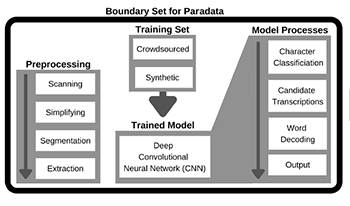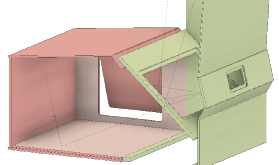
Numerous studies of social media analytics (SMA) shed light upon interesting insights into the information flow in social media. As social media becomes a crucial part of human society, bridging and merging these studies could shape ideas and designs for real-world applications that allow more transparency and understanding of social media. Among several challenges of SMA, this paper focuses on two issues of 1) invasive and greedy analysis methods concerning user privacy, and 2) lack of comprehensive representations of analysis results. We use our analysis on Telegram data to propose that pursuing persona profiling using generalizing contextual analysis via Natural Language Processing (NLP) technologies could address the first problem. For the second problem, we propose to visualize the analysis results, i.e. persona profiles, to increase both comprehensibility and interpretability.

While a familiar term in fields like social science research and digital cultural heritage, ‘paradata’ has not yet been introduced conceptually into the archival realm. In response to an increasing number of experiments with machine learning and artificial intelligence, the InterPARES Trust AI research group proposes the definition of paradata as ‘information about the procedure(s) and tools used to create and process information resources, along with information about the persons carrying out those procedures.’ The utilization of this concept in archives can help to ensure that AI-driven systems are designed from the outset to honor the archival ethic, and to aid in the evaluation of off-the-shelf automation solutions. An evaluation of current AI experiments in archives highlights opportunities for paradata-conscious practice

Color appearance of transparent objects is not adequately described by colorimetry or color appearance models. Despite the fact that the retinal projection of a transparent object is a combination of its color and the background, measurements of this physical combination fail to predict the saliency with which we perceive the object's color. When the perceive color forms in the mind, awareness of their physical relationship separates the physical combination into two unique perceptions. This is known as color scissioning. In this paper a psychophysical experiment utilizing a seethrough augmented reality display to compare virtual transparent color samples to real color samples is described and confirms the scissioning effect for lightness and chroma attributes. A previous model of color scissioning for AR viewing conditions is tested against this new data and does not satisfactorily predict the observers' perceptions. However, the model is still found to be a useful tool for analyzing the color scissioning and provides valuable insight on future research directions.

Translucency is a visual property attributed to objects that light may cross without transmitting a clear image of the scene which is behind. In absence of a more precise definition, this perceptual attribute is often considered as an intermediate between transparency, which is the property of objects that light may cross by transmitting a clear image of the scene behind, and opacity, which is the property of blocking the transmission of light and therefore masking completely the scene behind. If it is rather clear that translucency is closely related to light scattering, it is difficult to classify the translucent appearance according to one scale only, due to the different types of scattering, which can occur as well as the role of absorbance and thickness of the material. Through synthetic images rendered by optical models, we show that surface scattering, volume (or subsurface) scattering, possibly mixed with selective absorption, produce different types of translucency effects and different intermediates between transparency and opacity. We thus propose to represent translucency according to three axes related to these three optical phenomena: surface scattering, volume scattering, and absorption.